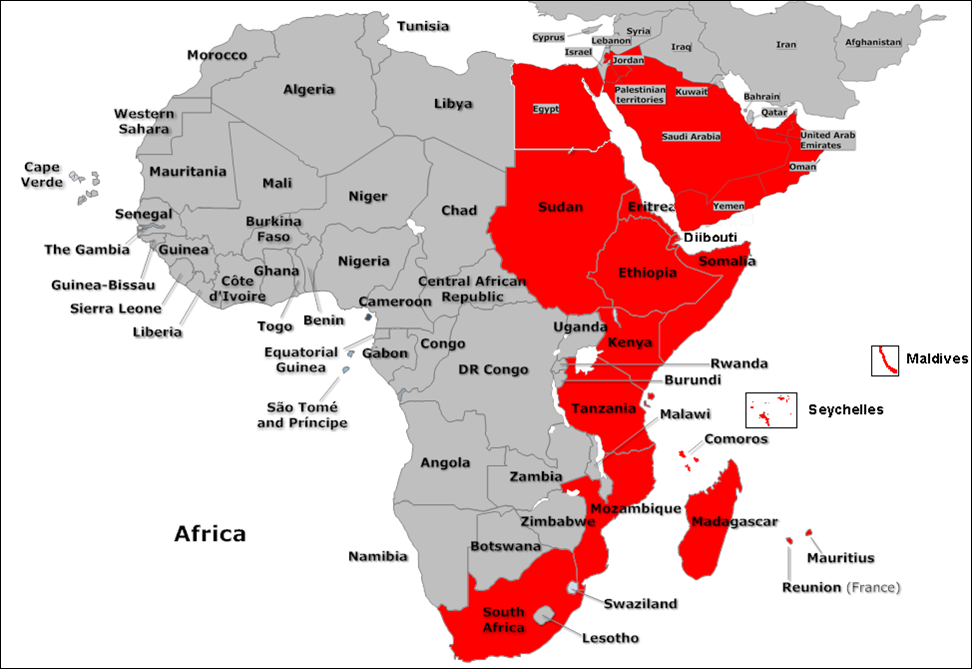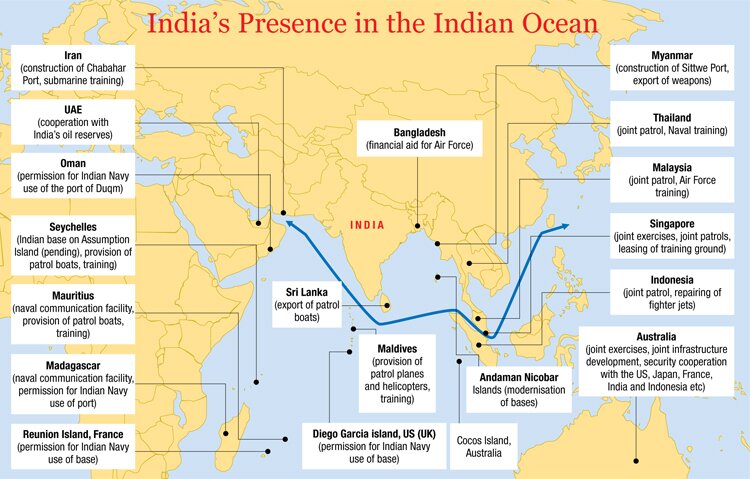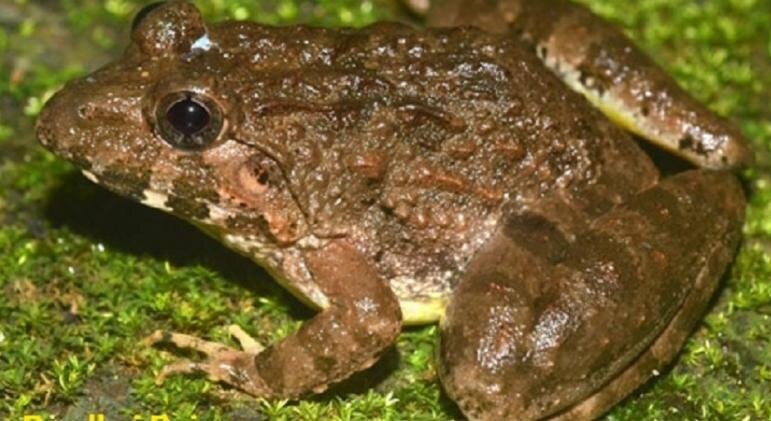International Relations
Djibouti Code of Conduct
Why in News
India joined the Djibouti Code of Conduct (DCOC) as an observer as part of efforts aimed at enhancing maritime security in the Indian Ocean region.
Key Points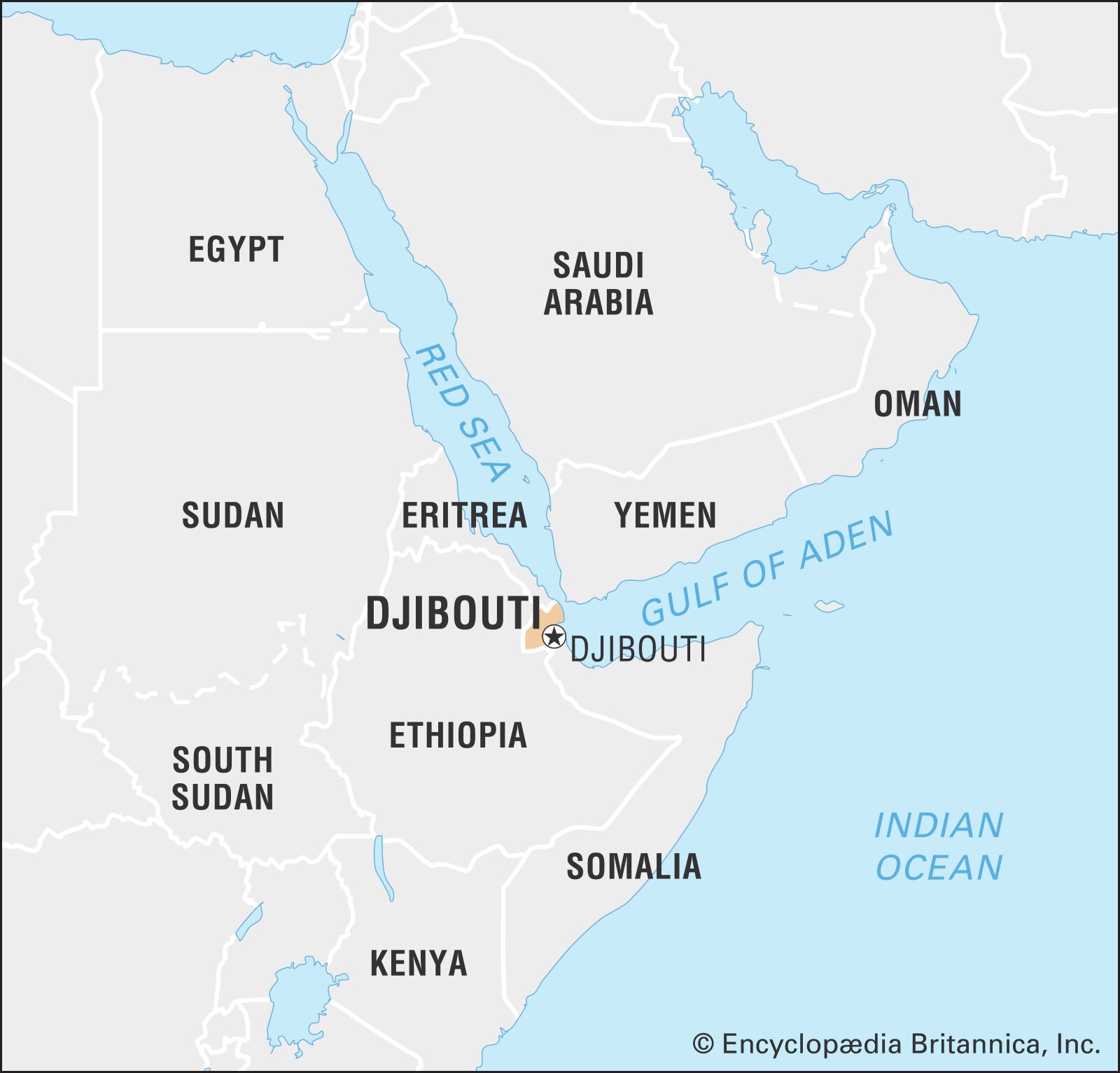
- Djibouti Code of Conduct:
- About: It is also known as the Code of Conduct concerning the Repression of Piracy and Armed Robbery against Ships in the Western Indian Ocean and the Gulf of Aden.
- It was adopted on 29th January 2009.
- It was established under the International Maritime Organization (IMO).
- Objective: Under the code, the signatories agreed to co-operate to the fullest possible extent in the repression of piracy and armed robbery against ships.
- Jeddah Amendment: An amendment to DCOC was made in 2017 to cover other illicit maritime activities, including human trafficking and illegal, unreported and unregulated fishing and to build national and regional capacity to address wider maritime security issues, as a basis for sustainable development of the maritime sector.
- Signatories: It has been signed by 20 countries including Djibouti, Ethiopia, Kenya, Madagascar, Maldives, Seychelles, Somalia, the United Republic of Tanzania, Yemen, Comoros, Egypt, Eritrea, Jordan, Mauritius, Mozambique, Oman, Saudi Arabia, South Africa, Sudan and the United Arab Emirates.
- The member states are located in areas adjoining the Red Sea, Gulf of Aden and the east coast of Africa and include island nations in the Indian Ocean.
- Observers: India, Japan, Norway, the UK and the USA.
- About: It is also known as the Code of Conduct concerning the Repression of Piracy and Armed Robbery against Ships in the Western Indian Ocean and the Gulf of Aden.
- Significance of India Becoming an Observer
- Boosting its Indian Ocean Outreach: As India is strengthening its position in the Indian Ocean and nearby waters as part of its overall Indo-Pacific policy, this move will help it in increasing its strategic footprints in Western and Eastern Indian Ocean besides Eastern African coastal states.
- Blue Economy: Blue economy is one of the key areas of the Jeddah Amendment.
- It refers to the sustainable use of ocean resources for economic growth, improved livelihoods and jobs, and ocean ecosystem health.
- India has also focussed on the growth of the blue economy through its framework of Indian Ocean Rim Association and DCOC may be another step in that direction.
- India-China: China’s territorial claims in the South China Sea, its claim in the East China Sea and its rapid advance into the Indian Ocean through ambitious strategic and economic initiatives like the String of pearls and Belt-and-Road Initiative may pose a threat to india.
- Further, China is modernising its military base at Djibouti.
- Given India’s stakes in Indian ocean and rising Indo-China conflicts, it is very significant for India to develop blue-water naval capabilities.
India in Indo-Pacific
- Shangrila Dialogue: India has internationally emphasized on including the western Pacific and the Indian Ocean in the concept of Indo-Pacific, like at Shangrila Dialogue in 2018.
- In accordance, it also set up an Indo-Pacific division in the Ministry of External Affairs.
- Quad: Quadrilateral Security Dialogue (Quad) refers to an ad hoc group including Australia, India, Japan, and the USA with a shared objective to ensure and support a “free, open and prosperous” Indo-Pacific region.
- India has signed reciprocal military logistics support agreements with Australia, USA and Japan to increase interoperability with the navies of those countries.
- ASEAN: India has emphasized the centrality of ASEAN in its Indo-Pacific framework and India’s Act East policy provides strategic direction to increase its cooperation with ASEAN members.
- SAGAR: The Indian government introduced the concept of SAGAR (Security And Growth for All in the Region) in 2015 as its strategic vision for the Indian Ocean Region.
- Through SAGAR, India seeks to deepen economic and security cooperation with its maritime neighbours and assist in building their maritime security capabilities.
- India’s other policies impacting the maritime domain include Project Sagarmala, Project Mausam, Information Fusion Centre (IFC) for the Indian Ocean Region (IOR), etc.
- India has also begun to focus on its strategic partners in the Western Indian ocean. It has been accepted as an observer at Indian Ocean Commission.
Biodiversity & Environment
Initiatives Launched on G20 EMM
Why in News
Recently, the G20 Environment Ministers Meeting (EMM) has taken place under the Presidency of the Kingdom of Saudi Arabia.
- Global initiatives to reduce Land Degradation and Coral Reef Programme and two documents on climate change, related to managing emissions and climate change adaptations under the G20 in 2020, have been launched.
- G20 EMM, 2019 saw an agreement on adopting a new implementation framework for actions to tackle the issue of marine plastic waste on a global scale.
Key Points
- Global Initiative on Reducing Land Degradation:
- It aims to strengthen the implementation of existing frameworks to prevent, halt, and reverse land degradation within G20 member states.
- The Scientific Conceptual Framework for Land Degradation Neutrality (LDN), developed by the United Nations Convention to Combat Desertification (UNCCD), provides a scientific foundation for understanding, implementing and monitoring land degradation.
- Globally, it aims to take into account possible implications on the achievement of Sustainable Development Goals (SDG-13: Climate Action, SDG-14: Life below Water, SDG-15: Life on Land) and adhere to the principle of doing no harm.
- It aims to strengthen the implementation of existing frameworks to prevent, halt, and reverse land degradation within G20 member states.
- Global Coral Reef Research and Development Accelerator Platform:
- It is an innovative action-oriented initiative aimed at creating a global research and development programme to advance research, innovation and capacity building in all facets of coral reef conservation, restoration and adaptation.
- It will strengthen ongoing efforts and commitments made to enhance coral reefs conservation and stop their further degradation.
- Limiting global average temperature and pursuing efforts to limit the temperature increase, in line with the Paris Agreement, provides the only chance for the survival of coral reefs globally.
- India’s Stand:
- India intends to take measures to enhance coral reef conservation under the National Coastal Mission Programme.
- The proposed mission under the National Action Plan on Climate Change (NAPCC) will address the impact of climate change on coastal and marine ecosystems.
- It will include all phases of the Integrated Coastal Zone Management (ICZM) Project.
- India has also put efforts towards achieving land degradation neutrality and towards the attainment of global goals of climate change mitigation and adaptation.
- The Indian government sees schemes such as the Pradhan Mantri Fasal Bima Yojana, Soil Health Card Scheme and Pradhan Mantri Krishi Sinchayee Yojana as tools to tackle the problem of land degradation.
- India is committed to working with G20 nations for a better world and is taking adequate action to meet the Paris Agreement and its climate commitments.
- It was emphasised that equity, common but differentiated responsibilities, finance and technology partnerships are the key pillars to tackle the problem of climate change.
- India intends to take measures to enhance coral reef conservation under the National Coastal Mission Programme.
Paris Agreement
- It was adopted by 195 parties at the UN climate conference "COP 21" held in Paris in 2015 with an aim to reduce the hazardous greenhouse gas (GHG) emissions.
- Objective: To prevent an increase in global average temperature and keep it well below 2 degrees Celsius.
- It emphasised that global GHG emissions must fall 45% by 2030 and reach net zero by 2050 to avoid the worst impacts of climate change.
- 19 members of the G20, except the USA which has pulled out of it, have voiced their commitment to the full implementation of the deal.
G20
- It is an informal group of 19 countries and the European Union (EU), with representatives of the International Monetary Fund and the World Bank.
- Headquarters: It operates as a forum and not as an organisation. Therefore, it does not have any permanent secretariat or management and administrative structure.
- Members: Argentina, Australia, Brazil, Canada, China, France, Germany, India, Indonesia, Italy, Japan, Republic of Korea, Mexico, Russia, Saudi Arabia, South Africa, Turkey, the UK, the USA, and the EU.
International Relations
Japan’s New Prime Minister
Why in News
Japan recently elected Yoshihide Suga as its new Prime Minister. He belongs to the ruling Liberal Democratic Party (LDP) of Japan.
Key Points
- Key Challenges Ahead: The new PM has to battle with the Covid-19 pandemic, rebuild the economy and also plan the Olympics scheduled to take place in Tokyo in 2021.
- Political System of Japan :
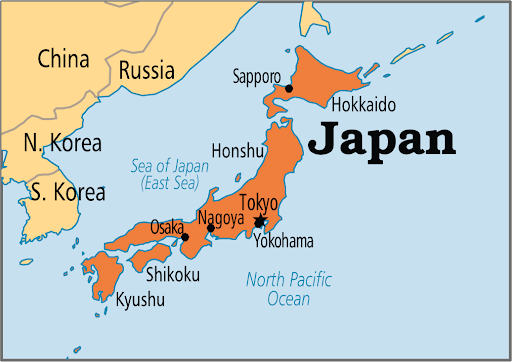
- Japan has a multi-party, bicameral, parliamentary, representative democratic constitutional monarchy.
- Constitution: It has a unitary model with supremacy of constitution.
- The Constitution of Japan is the fundamental law of Japan, enacted on 3rd May 1947.
- It is one of the very few democratic constitutions in the world having fundamental duties, apart from India.
- Government: The Government of Japan consists of a legislature, executive and judiciary.
- The Emperor is the Head of State and the Prime Minister is the Head of Government and the Head of the Cabinet (executive).
- The Emperor holds nominal ceremonial authority. For e.g. The legislature is known as the National Diet. Its members are directly elected by the people.
- The Diet has two houses- upper House of Representatives and lower House of Councillors.
- The Prime minister is designated by the National Diet but only the Emperor has the authority to appoint the Prime Minister.
- Feature Borrowed in Indian Constitution: The Indian Constitution derives its “Procedure established by Law” component from the Japanese constitution.
- The expression occurs in Article 21 (Right to Life and Personal Liberty).
- It means that law duly enacted by the legislature or the concerned body is valid only if the correct procedure has been followed to the letter.
- Hence, the validity of a law that has prescribed a procedure cannot be questioned on the ground that the law is unreasonable, unfair or unjust.
- It is different from the expression ‘due process of law’ contained in the American Constitution, which not only checks if there is a law to deprive the life and personal liberty of a person but also ensures that the law is made fair and just.
- With the Supreme Court pronouncement of “due process of Law “in the Maneka Gandhi case (1978), the court asserted the principle of reasonableness while deciding a case. It now means that the procedure must satisfy certain requisites in the sense of being fair and reasonable. The procedure cannot be arbitrary, unfair or unreasonable.
- Recent Developments in India-Japan Relations
- Recently, India and Japan signed a logistics agreement that will allow armed forces of both sides to coordinate closely in services and supplies. The agreement is known as Acquisition and Cross-Servicing Agreement (ACSA).
- Indian and Japanese warships conducted naval exercises in the Indian Ocean.
- India and Japan defence forces organize a series of bilateral exercises namely, JIMEX (naval exercise), SHINYUU Maitri (air force exercise), and Dharma Guardian (military exercise). Both countries also participate in Malabar exercise with the USA.
- Japan has mooted the Supply Chain Resilience Initiative (SCRI) as a trilateral approach to trade, with India and Australia as the key-partners.
- Supply chain resilience is an approach that helps a country to ensure that it has diversified its supply risk across a clutch of supplying nations instead of being dependent on just one or a few.
- The President of India visited Japan in 2019. The visit was the first presidential visit to Japan after a gap of 29 years.
Science & Technology
Serial Interval and Covid-19
Why in News
According to a recent research paper “Serial Interval of SARS-CoV-2 was Shortened Over Time by Non-pharmaceutical Interventions”, China was able to contain Covid-19 due to its ability to manage the serial interval.
- China has now gone over a month without any locally transmitted Covid-19 cases.
Key Points
- Serial Interval:
- It is the duration between symptom onset of a primary case and symptom onset of secondary cases (contacts) generated by the primary case.
- In simple terms, the serial interval is the gap between the onset of Covid-19 symptoms in Person A and Person B, who is infected by Person A.
- Origin: The term was first used by British physician William Pickles, who had initially referred to it as transmission interval with reference to a hepatitis epidemic in the UK during 1942-45.
- Later, another British physician RE Hope Simpson used the term serial interval, defining it as the interval between successive illness onsets.
- The serial interval depends on other epidemiological parameters such as the incubation period and the reproduction rate or R nought.
- The incubation period is the time between a person’s exposure to the virus and symptom onset.
- The reproduction rate is the number of people who will be infected by one infected person.
- It is the duration between symptom onset of a primary case and symptom onset of secondary cases (contacts) generated by the primary case.
- Contribution in Controlling Covid-19:
- The serial interval helps to gauge the effectiveness of infection control interventions besides indicating rising population immunity and forecast future incidence.
- Thus, the more quickly people who contracted Covid-19 are identified and isolated, the shorter the serial interval becomes and cuts down opportunities for transmission of the virus.
- To manage serial interval, a robust system of contact tracing, quarantine, and isolation protocols should be in place.
- Examples of China and South Korea:
- The serial interval in Wuhan (China) came down from 7.8 days to 2.6 days between early January and early February. Quarantining contacts within 1 day from symptom onset helped reduce the transmission by 60%.
- The serial interval in South Korea was estimated to be 3.63 days.
- Both countries put a lot of emphasis on aggressive contact tracing, quarantine, and isolation, thereby ensuring that infected patients could not infect any more people later in the infection cycle.
- Interventions such as suspension of intra- and inter-city travel, and different forms of social distancing widely implemented also kept the serial interval low.
Indian Economy
Need for Balanced Loan Restructuring Scheme: RBI Governor
Why in News
Recently, the Reserve Bank of India (RBI) governor has called for a balanced loan restructuring scheme to tackle the Covid-19 related stress.
Key Points
- The financial stability of the banking sector needs to be kept in mind while providing loan restructuring along with depositors' interest.
- There are crores of depositors (small depositors, middle-class people, retired persons) who depend on deposit income while borrowers are only in lakhs.
- The loan restructuring includes altering the terms of existing loans, usually to make them more favorable to the borrower. For example, the lender may restructure a loan to receive a lower interest rate or monthly payment.
- Restructured loans are most common if the borrower states that he/she can no longer afford payments under the old terms.
- The governor does not want a repeat of the Non-Performing Asset (NPA) surge that happened after 2014 with loan restructuring.
- The economic measures taken by the RBI in the wake of the global financial crisis of 2008-09, led to a surge in bad loans from 2014-15.
- The idea behind loan restructuring was to protect viable businesses that are facing genuine cash flow problems. The revival of business will ensure NPA levels are kept low and also ensure quick economic recovery.
- However, the governor cautioned that the economic recovery would be gradual, as the upticks in some sectors appear to be levelling off as efforts towards reopening of the economy are confronted with rising infections.
Background
- In the recent Monetary Policy report, RBI has allowed banks to restructure loans to reduce the rising stress on incomes and balance sheets of large corporates, Micro, Small and Medium Enterprises (MSMEs) as well as individuals.
- A large number of firms that otherwise maintain a good track record are facing the challenge as their debt burden is becoming disproportionate, relative to their cash flow generation abilities.
- The RBI set up a committee headed by K.V. Kamath on restructuring of loans impacted by the Covid-19 pandemic.
- The committee was tasked to recommend parameters for one-time restructuring of corporate loans.
- The committee recommended five financial ratios and sector-specific thresholds for resolution of Covid-19 related stressed assets in 26 sectors.
- It also specified that restructured loan tenure cannot be extended beyond two years.
Issues Involved
- The major criticism of the restructuring scheme is the select 26 sectors identified by the K V. Kamath committee. However, there are many other sectors that are eligible for a restructuring scheme.
- The 26 sectors include automobiles, power, tourism, cement, chemicals, gems and jewellery, logistics, mining, manufacturing, real estate, and shipping among others.
- As per the RBI, only those borrowers which were classified as standard and with arrears less than 30 days as at 1st March 2020 are eligible for restructuring.
- The two year period is also very short for economic recovery. Given the GDP contraction and no second economic stimulus by the government in sight, the recovery will take longer than two years.
- In May 2020, the government announced the ‘Atmanirbhar Bharat Abhiyan (or Self-reliant India Mission)’ with an economic stimulus package — worth Rs. 20 lakh crores aimed towards achieving the mission.
Way Forward
- The loan restructuring must be a temporary step as continuing it for long may lead to an inflation surge, currency crisis, and financial instability. It is important that post-Covid-19, regulatory measures are rolled out in a very careful and orderly manner and the financial sector returns to normal functioning without relying on the regulatory relaxations as the new norm.
Science & Technology
Pact for Sputnik V Availability in India
Why in News
The Russia Direct Investment Fund (RDIF), which is piloting Russia’s Sputnik V vaccine, has partnered with the Hyderabad-based Dr. Reddy’s Laboratories to supply 100 million doses of the vaccine.
Key Points
- Sputnik V:
- The Russian vaccine has been named after the first artificial Earth satellite, Sputnik-I launched by the Soviet Union.
- It is the first Covid-19 vaccine to be approved by any government for common people.
- The Russian vaccine has outrun other Covid-19 vaccines like Oxford-Astra Zeneca, Moderna and Pfizer which are still in trials.
- It has been developed by Moscow’s Gamaleya National Research Institute of Epidemiology and Microbiology in collaboration with the Russia’s defence ministry.
- It is based on the DNA of a SARS-CoV-2 type adenovirus, a common cold virus.
- It uses the weakened virus to deliver small parts of a pathogen and stimulate an immune response.
- It is administered in two doses and consists of two types of a human adenovirus.
- The Phase 1 and 2 results have shown promise.
- The results of Phase I and Phase II clinical trials of the vaccine were published in The Lancet, demonstrating no serious adverse effects and a stable immune response in 100% of the participants.
- Phase 3 trials will be conducted in India to meet the requirements of the Indian regulators.
- Sputnik V vaccine could provide a credible option in India’s fight against Covid-19.
- India has also partnered with the USA for development of Covid-19 vaccine.
- Regulatory Requirements in India:
- The approval for a vaccine is given by the Central Drugs Standard Control Organisation (CDSCO).
- A vaccine, developed outside India, needs to be tested with late-phase human trials, usually both phase-2 and phase-3, on an Indian population as a part of general requirement.
- CDSCO can also give emergency authorisation without late-phase trials, considering the extraordinary situation.
- The approval for a vaccine is given by the Central Drugs Standard Control Organisation (CDSCO).
- Concerns Regarding the Vaccine:
- Experts expressed concerns over the safety and efficacy of the vaccine due to its extremely fast production and lack of published data on the vaccine.
- Russia has only made public the results of phase I and phase II of the clinical trials, which it claimed were successful and produced the desired immune response.
- The late-phase human trials are important because the vaccine’s efficacy can differ on different population groups. After trials, vaccines are given to a large number of people, and the risks involved are much higher if trials are not comprehensive.
- Russia, however, has claimed that this was made possible due to the fact that its Covid-19 vaccine candidate closely resembled a vaccine for Middle East Respiratory Syndrome (MERS) disease, caused by another coronavirus, that had already been tested extensively.
- There are also issues in manufacturing the vaccine in India as there is no agreement for its production in India.
- Pune-based Serum Institute of India, the world’s largest manufacturer of vaccines by volume, has already entered into tie-ups with developers to mass-produce their vaccines. Other Indian companies have also done similar agreements but there is none with Russia.
- Experts expressed concerns over the safety and efficacy of the vaccine due to its extremely fast production and lack of published data on the vaccine.
- Vaccine Base in India:
- Besides a big domestic market, India is a strong player globally in the field of vaccines. In FY20, vaccine exports accounted for 4.27% of total pharma exports.
- Its manufacturing skill is evident from the fact that about 70% WHO vaccines and 90% of measles shots are sourced from India.
Adenovirus Vector Vaccine
- In this vaccine, adenovirus is used as a tool to deliver genes or vaccine antigens to the target host tissue.
- Adenoviruses (ADVs) are DNA viruses ranging from 70-90 nanometre in size, which induce many illnesses in humans like cold, respiratory infection etc.
- Adenoviruses are preferred for vaccines because their DNA is double stranded which makes them genetically more stable and the chances of them changing after injection are lower.
- However, there are drawbacks of adenovirus vector vaccines like pre-existing immunity in humans and inflammatory responses which may make vaccines less effective.
Central Drugs Standard Control Organisation
- CDSCO, under Directorate General of Health Services, Ministry of Health & Family Welfare, is the National Regulatory Authority (NRA) of India.
- Under the Drugs and Cosmetics Act, 1940, CDSCO is responsible for approval of Drugs, Conduct of Clinical Trials, laying down the standards for Drugs, control over the quality of imported Drugs in the country and coordination of the activities of State Drug Control Organizations by providing expert advice.
Biodiversity & Environment
Morphological Phenotypic Plasticity in Kalinga Frog
Why in News
Recently, Indian scientists from the Zoological Survey of India, Pune have reported a first-of-its-kind discovery of morphological phenotypic plasticity (MPP) in the Kalinga cricket frog.
Key Points
- Kalinga Cricket Frog:
- Scientific Name: Fejervarya kalinga.
- It is a recently identified species which was documented in 2018.
- It was thought to be endemic only to the higher-elevation hill ranges of the Eastern Ghats in Odisha and Andhra Pradesh.
- Cricket frogs are indicators of a healthy ecosystem and live in wide habitat ranges in agricultural fields, streams, swamps and wetlands.
- Latest Findings:
- It has been reported from the central Western Ghats, with the evidence of considerable MPP.
- Its physical characteristics are entirely different from the other known Fejervaraya/Minervarya species from the Western Ghats.
- Fejervarya is a genera of frogs in the family Dicroglossidae found in Asia.
- Minervarya is a genus of frogs in the family Dicroglossidae.
- It was the only genetic analysis that helped prove that physically different-looking frogs from eastern and western ghats were the same.
- Morphological character utility (identification of structural features) is not enough to identify a species and its taxonomic (related to classification of organisms) uncertainties. Utility of genetic data and DNA barcoding tools help in resolving these.
- Morphological Phenotypic Plasticity:
- Phenotypic plasticity is the ability of an organism to change in response to stimuli or inputs from the environment.
- The term "phenotype" refers to the observable physical properties of an organism, which include the organism's appearance, development, and behavior.
- The response may or may not be adaptive, and it may involve a change in morphology (MPP), physiological state, or behavior, or some combination of these, at any level of organisation, the phenotype being all of the characteristics of an organism other than its genes.
- MPP is the ability of an organism to show drastic morphological (physical features) variations in response to natural environmental variations or stimuli.
- It is also known as phenotypic responsiveness, flexibility, and condition sensitivity.
- Frogs are known to exhibit varied reproductive behaviours by adopting different modes and strategies for successful survival.
- Phenotypic plasticity is the ability of an organism to change in response to stimuli or inputs from the environment.
- Differences in Morphological Features:
- There are contrasting morphometric differences in terms of head shape and size, fingers and toe sizes between the Kalinga frogs from eastern and western ghats.
- The Kalinga frog is a semi-aquatic frog that actively breeds in the monsoon.
- The Western Ghats are more influenced by the southwest monsoon, while the Eastern Ghats are influenced by the northeast monsoon, impacting the breeding seasons of the frogs.
- Significance of the Discovery:
- The behavioural studies of many anuran (frog or toad) species will help in generating information on the selection of breeding sites, courtship patterns and ecological adaptations.
- The information will not only help to trace the distribution of these species along the peninsular region of India but could also be used to evaluate the possible links with other species that were found in the Northeast region.
- In this era of ‘mass extinction of smaller vertebrates’ and ‘rapid climate change’ scenarios, the report is a first-of-its-kind in Indian amphibian research history.
- More Research Needed:
- The study also emphasises that there is an urgent need to address or solve problems related to taxonomic uncertainties.
- Researchers are trying to understand the possibilities of this split between two populations due to the Deccan Trap formation (volcanic/igneous region).
- Usually, such kind of habitat expansion requires more nuclear gene divergence.
- The currently found differences are not due to just a habitat expansion because there is very less genetic divergence.
- Another important question is how this little genetic divergence is leading to such contrasting morphological adaptations in these two biogeographic zones, the Western and Eastern Ghats.
- Biogeographic zones are the large distinctive units of similar ecology, biome representation, community and species.
- Also, there is a need for more research on the isolation of these two populations due to climate change.
Western and Eastern Ghats
- The Western Ghats and the Eastern Ghats are the two different biogeographic zones, with unique histories.
- While the Western Ghats are considered as a biodiversity hotspot, that is not the case with the Eastern Ghats.
- The Eastern Ghats are older than the Western Ghats and have a complex geologic history related to the assembly and breakup of the ancient supercontinent of Rodinia and the assembly of the Gondwana supercontinent.
- Both landscapes have unique ecosystems, with special microclimates and microhabitats that support a great number of diversities including amphibians.
Important Facts For Prelims
National Hispanic Heritage Month: USA
Why in News
Recently, the National Hispanic Heritage Month began in the USA. The annual event is marked every year from 15th September to 15th October.
Key Points
- Aim:
- The Hispanic Heritage Month honours the history, culture and contributions of American citizens whose ancestors hailed from Spain, Mexico, the Caribbean and Central and South America.
- Background:
- The observation was started in 1968 by President Lyndon Johnson as Hispanic Heritage Week. It was extended to an entire month in 1988 by President Ronald Reagan, the year it was enacted into law.
- Hispanics in the USA:
- Hispanic Americans are currently the largest minority group in the USA, making up a fifth of the total USA population. Majority of Hispanics are Mexican origin, followed by Puerto Rican.
- The community is referred to as Hispanic, Latino or Latinx because the terms refer to a person’s origin or culture, without considering their race.
- Significance of the Hispanic Heritage Month:
- The event begins in the middle of September, because of the significance 15th September holds in Latin American history — being the Independence Day of Costa Rica, El Salvador, Guatemala, Honduras and Nicaragua from Spain in 1821.
- The 16th September and 18th September being the Independence Days of Mexico and Chile, respectively from Spanish rule in 1810.
- Another nation on the American continent, Belize, became independent from Great Britain on 21th September 1981.
- Columbus Day or Día de la Raza, a cultural celebration, also falls on 12th October during the 30-day period.

